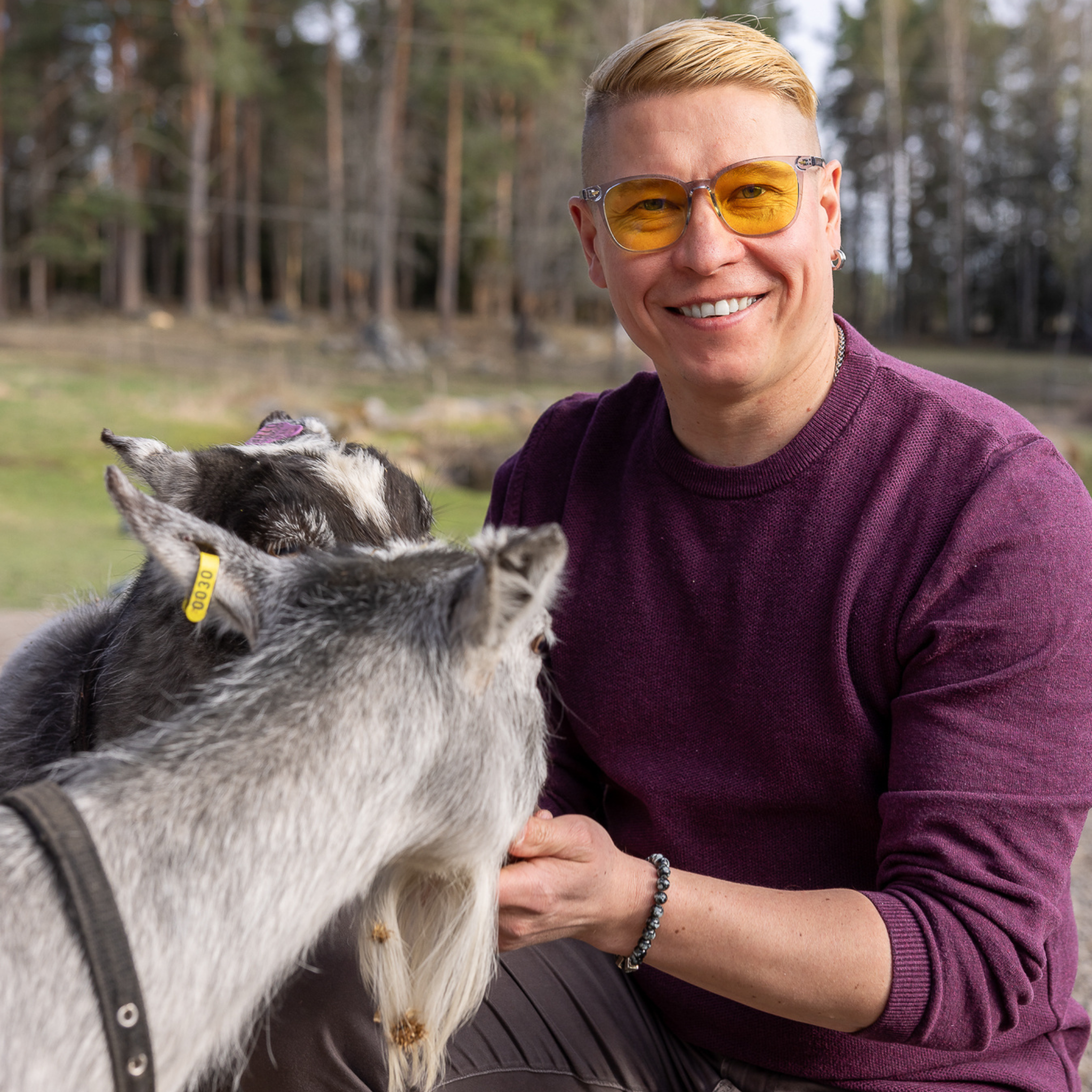Blue light is much more than just the digital screens that glow in the evening. We live in a world where lighting has changed from natural, warm light to constant, bright artificial light pollution. This text explains in a simple and clear way what blue light is, why it can be harmful, and how to protect yourself smartly both during the day and in the evening.
What exactly is blue light?
There's a lot of talk about blue light these days, but what is it really, and why does it matter?
Blue light is part of the natural light spectrum, i.e. the light that the sun shines down from the sky, for example. It is the bright, high-energy part of light that helps us wake up in the morning and keeps us alert during the day. So in itself, it is not unambiguously “bad” in any way, especially from a natural source.
Why should you be careful about it?
The problem is not natural light, but the fact that our entire everyday lighting has changed dramatically. It's not just about digital screens anymore, but also about the fact that the light in our environment is now quite harsh and bright almost everywhere:
- Incandescent bulbs have been replaced with blue-tinted fluorescent tubes and LEDs
- stores, shopping malls, schools, hospitals and offices shine with even, super bright and powerful artificial light
- even street lights these days shine a bright white, blue-tinged light
And on top of that , constantly staring at screens. It's no wonder your head starts to hurt or you can't sleep when your body is getting the message from morning to night: it's broad daylight .
Excessive blue light – not only at night, but also during the day – can cause:
- dry eyes and other irritation symptoms
- lack of concentration and fatigue
- headaches, migraines and general overload
- anxiety or depression
- in the long term, also the risk of eye diseases and vision loss
And in the evening:
- disrupt sleep rhythms and melatonin production
- makes it difficult to fall asleep and impairs sleep quality
How can you protect yourself?
The best protection is always to regulate light and screen time: go out in the morning without glasses, stay home in the evenings with dim and orange-toned lights, and of course, keep those digital screens to a minimum. But since that's not always realistic, you can also:
- wear glasses that block harmful blue light
- choose warmer-toned lights for the evening
- minimize the use of bright lights and screens
Just a quick reminder: Blue light is not just the enemy. But its quantity, quality and timing are crucial. When blue light comes from nature's full spectrum light source, the sun, it really does good and supports natural well-being in a very effective way.
But when your eyes sting, your head aches, and you feel like a mass of thoughts baked in a spotlight, it's worth stopping for a moment. If you feel the strain of artificial blue light all day long on your body and mind, it's no wonder that you feel restless in the evening or sleep is elusive.
Maybe now is finally the time to pay attention to the light environment and the insidious effects of harmful artificial blue light. Maybe now is the time to at least put quality lenses on your nose and help your body return to a more natural state and optimal circadian rhythm.
PS If you want a guaranteed blue light blocker for your eyes, you need colored lenses that block blue light effectively and optimally. Clear lenses for blue light filtering are a bit on the expensive side, but for us, that 's not enough.
Light is the language of the body. And the morning sunbeam is its gentlest phrase.
Sources:
- Tosini, G., Ferguson, I., & Tsubota, K. (2016). Effects of blue light on the circadian system and eye physiology. Molecular Vision, 22 , 61–72. [PubMed ID: 27081296]
- Behar-Cohen, F., Martinsons, C., Vienot, F., Zissis, G., Barlier-Salsi, A., Cesarini, JP, ... & Bailly, F. (2011). Light-emitting diodes (LED) for domestic lighting: any risks for the eye? Progress in Retinal and Eye Research, 30 (4), 239–257. https://doi.org/10.1016/j.preteyeres.2011.04.002






